Rumours that have been swirling for five years can finally be put to rest. Yes, Versatile and Kubota are jointly building an all-new tractor to be marketed in both colours. Both companies made announcements in mid-March, briefly outlining the design of the new machine and the OEM manufacturing agreement. Although the rumour mill has been […] Read more
Stories by Ron Lyseng

Inside PAMI’s magical mystery combine
BRANDON — It’s likely that every prairie farmer has heard about PAMI’s combine calibration machines, but few have ever seen one in person, much less in action. Well here’s the scoop. There are only about 20 such processor combines worldwide, the majority of which were designed and built by PAMI in Humboldt, Sask. Sooner or […] Read more
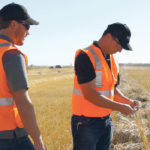
Do you combine acres or bushels per hour?
Your grain loss monitor is a valuable tool, but it must be calibrated to ensure good data is driving decisions
BRANDON — When discussing combines, farmers typically compare acres of ground covered per hour. Isn’t it more logical to discuss performance in terms of bushels of grain per hour in the tank? Talking about acres per hour is misleading. It distracts from the real issue of how many bushels your combine can harvest in one […] Read more
iScan-plus logs four soil factors at once
Tillage and seeding implement manufacturers are giving farmers more working tool adjustment features. But how do you know what to adjust and which way to adjust it? Simply guessing is counter to the intent of these adjustments, said Veris Technologies manager Tyler Lund in a phone interview. He says Veris has just introduced a new […] Read more
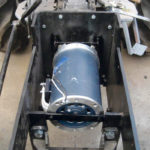
Buying electric implements for the right reason
Every month, another e-tractor announcement comes across our desks here at The Western Producer. Environmental factors drive this trend, along with energy efficiency, lower maintenance, noise level and motor longevity. But even when purchase prices come down, will it ever be practical to run a big battery powered 4×4 to replace your Versatile? Steve Heckeroth […] Read more
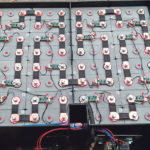
Solar power pulls Canadian cultivator
The first Solectrac eUtility sold in Canada was delivered to Ontario vegetable farmer Tony Neale last August, giving him plenty of time to try the electric tractor before winter set in. Until August, Neale had been running his WheelBarrow Farms operation with a 30 horsepower Kubota. There was nothing really wrong with the orange tractor, […] Read more
Thumbs up at Nebraska Tractor Test
When Steve Heckeroth finished fine-tuning his first Solectrac eUtility and eFarmer prototypes, he loaded the pair on a trailer and hauled them 6,400 kilometres to the Nebraska Tractor Testing Lab. The 40 horsepower eUtility was a conversion of an existing diesel tractor imported from India. Subsequent eUtility tractors are being shipped from India in their […] Read more
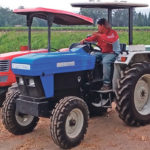
Electric tractors hit Canadian fields with a whir
Two California-built all-electric tractors are coming to the Canadian market this year. While the biggest is only 40 horsepower, these are serious tractors that may foretell the future of farm equipment. The tractors are built by Solectrac, owned by inventor Steve Heckeroth, who has been doing electric conversions on cars, trucks, race cars and tractors […] Read more
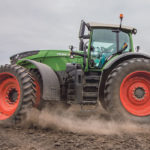
517 h.p. Fendt steps into big tractor ring
With 517 drill-pulling horsepower, the Fendt 1050 Vario has put an end to the days when farmers viewed Fendts as yard tractors. Fendt is now competing with North America’s big tractor manufacturers. Featured last week at the World Ag Expo in Tulare California, the 517 h.p. model 1050 Vario emphasizes technologies designed to make the […] Read more
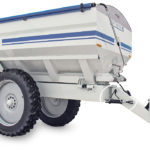
Loftness goes bigger, more precise with spreading
Loftness has joined the growing list of manufacturers that are supplying higher-caliber fertilizer spreaders. The Hector, Minnesota, company has developed a pair of 12-ton lime and fertilizer applicators. The short-line farm equipment manufacturer has a new fertilizer spreader, the FB1210 and for farmers who apply lime, the L1230, a12-ton spreader for both lime and fertilizer. […] Read more





